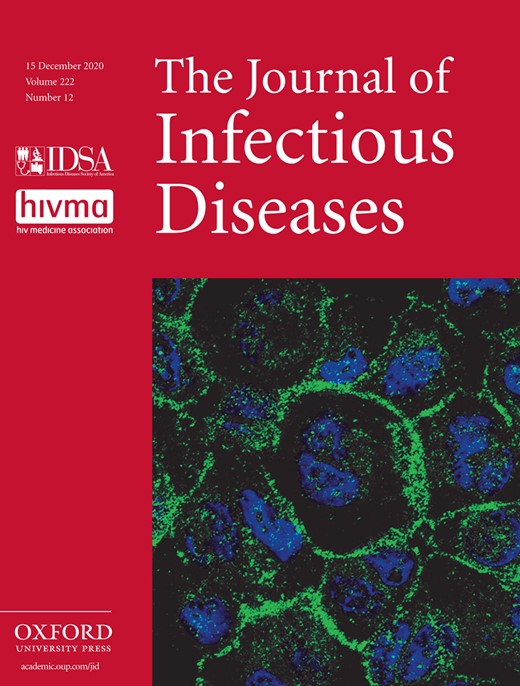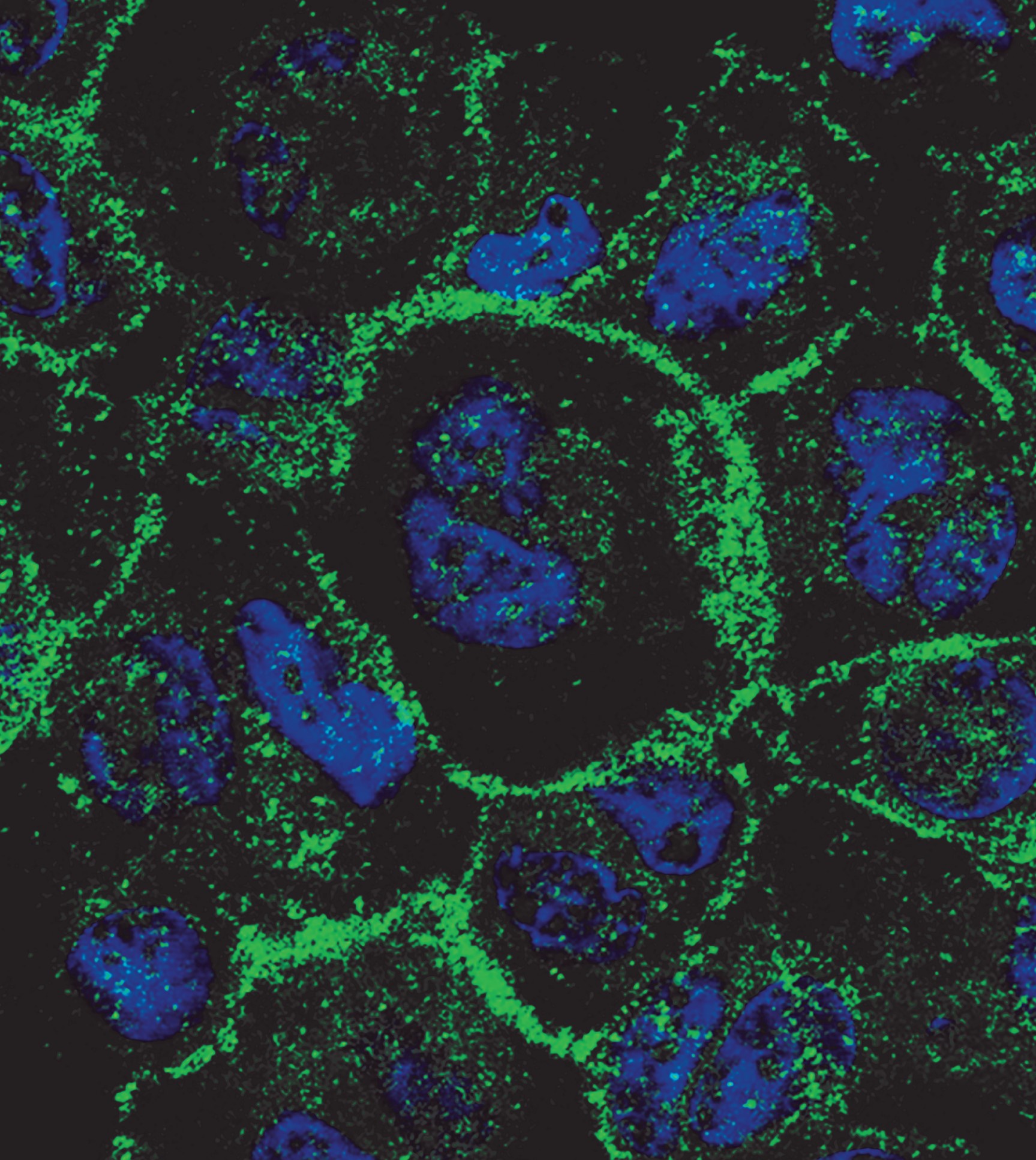
Cover image

Volume 222, Issue 12, 15 December 2020
EDITORIAL COMMENTARIES
Human Immunodeficiency Virus Phylogenetics in the United States—and Elsewhere
Infectious Disease Outbreaks: The Need For an All-in Approach
The Ongoing Threat of Methicillin-Resistant Staphylococcus aureus
REVIEW
COVID-19 Vaccines: Should We Fear ADE?
Coronavirus vaccines have sensitized animals to enhanced disease during live virus challenge. Predominant infection of parenchymal not myeloid cells lessens risk of intrinsic vaccine antibody-dependent enhanced disease. Rubella or measles inactivated vaccine-like–hypersensitivity reactions threaten.
COVID PERSPECTIVE
Location Matters: Geographic Disparities and Impact of Coronavirus Disease 2019
Recommendations are offered for addressing the significant disparities and challenges faced in access to testing, messaging around the coronavirus disease 2019 pandemic, and provision of care based on geographic location, especially in communities of color and rural and low-income areas.
MAJOR ARTICLES AND BRIEF REPORTS
COVID-19
High Seroprevalence of Anti-SARS-CoV-2 Antibodies in Chelsea, Massachusetts
No SARS-CoV-2 Neutralization by Intravenous Immunoglobulins Produced From Plasma Collected Before the 2020 Pandemic
Plasma From Recovered COVID-19 Patients Inhibits Spike Protein Binding to ACE2 in a Microsphere-Based Inhibition Assay
Using a rapid, microsphere-based assay, the authors quantified the ability of coronavirus disease 2019 convalescent plasma to inhibit binding of severe acute respiratory syndrome coronavirus 2 spike protein to its receptor, angiotensin-converting enzyme, demonstrating inhibition in >90% of recovered patients.
SARS-CoV-2 Antibody Avidity Responses in COVID-19 Patients and Convalescent Plasma Donors
Evaluation of antibody avidity from potential convalescent plasma donors and hospitalized COVID-19 patients suggests increased SARS-CoV-2 IgG avidity is associated with being older, male, and hospitalized. Avidity is correlated with neutralizing titers offering a potential screening parameter for convalescent donors.
A Granulocytic Signature Identifies COVID-19 and Its Severity
Unsupervised mapping of leukocyte surface markers identified a granulocytic COVID-19 signature comprising eosinophil and basophil CRTH2 downregulation, increased counts of CD15+CD16+ neutrophils, and decreased granulocytic CD11b expression, while PD-L1 checkpoint expression in basophils and eosinophils was associated with severity.
HIV/AIDS
Addressing Ethical Challenges in US-Based HIV Phylogenetic Research
An NIH working group developed a series of recommendations to address ethical issues arising in US-based HIV phylogenetic analysis, including recommendations on study design; data access, security, and management; legal issues; community engagement; and communication and dissemination of findings.
Toll-Like Receptor 2 Promoter -196 to -174 Deletion Affects CD4 Levels Along Human Immunodeficiency Virus Infection Progression
Our results suggest a role of TLR2 germline variants in HIV-1 disease progression rate. Analysis of the TLR2 promoter -196 to -174 deletion links lower levels of TLR2 and diminished CD4+ T-cell counts and worse prognosis, probably due to a lower activation of the immune system.
Metabolomic Signature as a Predictor of Liver Disease Events in Patients With HIV/HCV Coinfection
VIRUSES
The Impact of Different Types of Violence on Ebola Virus Transmission During the 2018–2020 Outbreak in the Democratic Republic of the Congo
A time-series study of the 2018–2020 Ebola virus disease outbreak in the Democratic Republic of the Congo found both Ebola-targeted and untargeted violence increased transmission, though targeted violence, primarily driven by civilian-involved events, had the largest impact.
Elevated CXCL10 Serum Levels in Measles Virus Primary Infection and Reinfection Correlate With the Serological Stage and Hospitalization Status
Duration and Density of Fecal Rotavirus Shedding in Vaccinated Malawian Children With Rotavirus Gastroenteritis
Serial stool samples from Malawian children with rotavirus gastroenteritis tested for rotavirus using polymerase chain reaction had high levels of viral shedding despite vaccination. High and persistent rotavirus shedding among vaccinated children with breakthrough disease may contribute to ongoing transmission.
Induction of the Coxsackievirus and Adenovirus Receptor in Macrophages During the Formation of Atherosclerotic Plaques
Virus infections are linked to atherosclerosis but the mechanisms are unclear. We found that the coxsackievirus and adenovirus receptor is induced in macrophages during plaque formation in arterial walls, suggesting a mechanism for how enterovirus infect cells in atherosclerotic plaques.
Vaccine Effectiveness Against Prevalent Anal and Oral Human Papillomavirus Infection Among Men Who Have Sex With Men—United States, 2016–2018
Among 1767 men who have sex with men and transgender women aged 18–26 years in US cities during 2016–2018, vaccine-type HPV prevalence was lower among vaccinated (22.9%) compared with unvaccinated (31.6%) participants, suggesting real-world effectiveness of HPV vaccination.
Signal Activation of Hepatitis B Virus–Related Hepatocarcinogenesis by Up-regulation of SUV39h1
The histone methyltransferase suppressor of variegation 3–9 homolog 1 (SUV39h1) was upregulated by long term hepatitis B virus (HBV) infection. Their upregulation could enhance HBV-related hepatocarcinogenesis by activating their functions through the interaction with HBV X (HBx) protein.
BACTERIA
Genomic Epidemiology of Invasive Methicillin-Resistant Staphylococcus aureus Infections Among Hospitalized Individuals in Ontario, Canada
We describe the changing epidemiology of MRSA in Ontario, Canada. CC5 MRSA strains were replaced by CC8 strains, thereby shifting antimicrobial resistance patterns. Genome sequencing revealed a large strain diversity and few genomic clusters.
PATHOGENESIS AND HOST RESPONSE
Members of Prevotella Genus Distinctively Modulate Innate Immune and Barrier Functions in a Human Three-Dimensional Endometrial Epithelial Cell Model
Phylogenetically and metabolically diverse Prevotella interacted with human 3D endometrial epithelial cells (EEC) in a species-specific manner. P. disiens was cytotoxic to the EEC. P. timonensis exhibited high sialidase activity altered membrane-associated mucins more than P. bivia and other species.
Antibody Fc Glycosylation Discriminates Between Latent and Active Tuberculosis
Clinical management of Mycobacterium tuberculosis is complicated by difficulty in discriminating between latent infection and active disease. Here profiling antibody features and multivariate modeling highlight Fc domain glycosylation as a top discriminatory feature.



